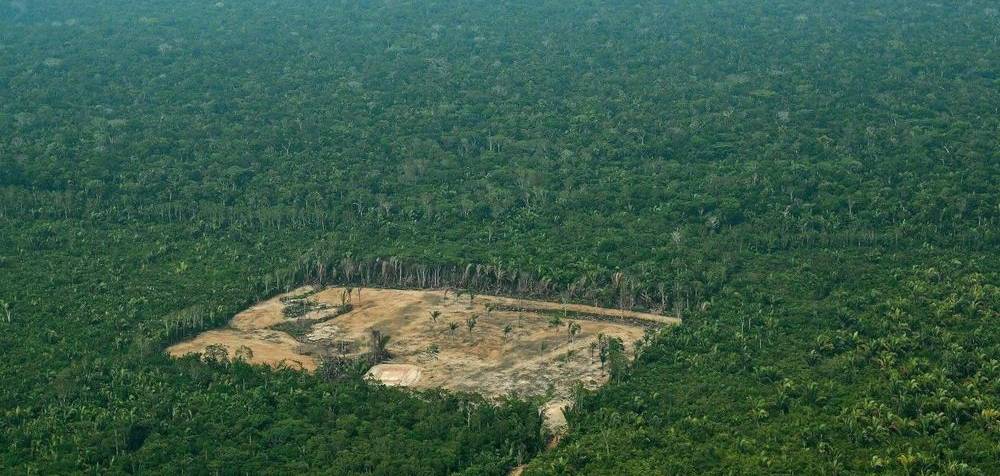
DEFORESTATION
According to the latest UN annual report, deforestation and forest degradation continue at an alarming rate. They definitely contribute to the current loss of biodiversity.
Yet forests contain the bulk of terrestrial biological diversity - from the boreal forests of the Far North to tropical rainforests.
These forests contain more than 60,000 different tree species overall and provide habitat for 80% of amphibian species, 75% of bird species and 68% of mammal species .
About 60% of all vascular plants are found in tropical forests .
The mangrove is home to spawning grounds and nurseries for many species of fish, molluscs and crustaceans. It also helps to retain sediments potentially harmful to seagrass beds and coral reefs, which constitute habitats for underwater life.
More than 100 million forests suffer from various attacks: fires, the action of pests, diseases, invasive species, drought and damaging climatic events.
The main driver of deforestation is the expansion of agriculture (mainly cattle ranching, soybean and oil palm cultivation) which accounts for 40%, forest fragmentation and loss of land. the resulting biodiversity. 30% is attributable to subsistence farming.
- Between 1990 and 2015, deforestation amounted to more than 240 million hectares.
- 170 million hectares are still at risk of disappearing by 2030.
They are home to 80% of terrestrial biodiversity (even more for tropical forests, the main victims of deforestation). They are essential for the well-being of men .
More than a billion and a half people depend directly on them for their food, their medicines, their shelter or the cooking of their food.
In addition, they are one of the major consumers of CO2 and one of our best allies in resisting climate change. They are real carbon dioxide vacuum cleaners . Trees, as they grow, absorb carbon dioxide and release oxygen: an essential action for the proper functioning of the planet… and the air we breathe.
By destroying them, it is releasing the CO2 that they could absorb into the atmosphere. Deforestation is therefore responsible for 20% of global greenhouse gas emissions ...
The conservation of much of the world's biodiversity is thus highly dependent on how we interact with and use the world's forests.
More than half of the world's forests are found in just five countries (Brazil, Canada, China, United States of America and Russian Federation). Massifs of over 1 million hectares constitute about 80 percent of the world's forest area. The remaining 20 percent is spread over more than 34 million massifs around the world, the vast majority of which are less than or equal to 1,000 hectares.
Forests provide green jobs to more than 86 million people and contribute to the livelihoods of many more people.
Around 880 million people worldwide, most of them women, spend part of their time collecting firewood or producing charcoal. The poverty rate is very high in the areas of exploitation.
It is urgent to generalize solutions and to fundamentally transform our food production and consumption methods.
Numerous measures and approaches are taken for conservation and sustainable development in favor of our forests, they offer solutions that would allow everyone to be a winner. Humanity depends on it.
Preserving our forests highlights that a balance between conservation objectives and resource demands that contribute to livelihoods is realistic for food security and human well-being.
- Species of trees and shrubs adapted to arid lands help men in their fight against desertification;
- insects, bats and wild birds pollinate crops;
- in mountain ecosystems, trees with large root systems prevent soil erosion;
- mangrove species contribute to resilience in the face of coastal flooding.
Climate change accentuating risks to food systems, the role of forests in carbon sequestration and storage, and climate change mitigation, is of growing importance to the agricultural sector.
In addition, the health and well-being of people is closely linked to forests. Over 28,000 plant species, many of which are found in forest ecosystems, are currently listed for their medicinal value. Simple forest walks can have beneficial effects on physical and mental health.
Many social and government actors are highlighting that we need to transform our food systems and move away from inappropriate agricultural practices, which are leading to the large-scale conversion of forest land to agricultural land and the loss of this forest biodiversity.
Measures that urgently demand to be generalized
- Agroforestry : In addition to being very lucrative for the farmer, it has many other advantages . It restores the ecological balance of farmland, prevents soil erosion and water runoff, provides other income options, and alleviates extreme local weather conditions. It is a method of exploiting agricultural land combining trees and crops or livestock. The association of trees and agriculture has considerable advantages, particularly in the field of soil protection.
- The practice of sustainable production in order to guarantee food security and lead us towards an economy based on a more rational use of resources. The aim is to reduce the impact of human activities on the environment.
- Restoring the productivity of degraded agricultural land which can be done by educating local producers for the maintenance of agroforestry plots and setting up nurseries in villages, but also by planting young tree seedlings fertilizers to strengthen soil fertilization,
- Adopting healthier diets ,
- Reducing food losses and wastes, combating Food Waste.
The right balance must be found between conservation objectives and the demands for resources which contribute to the livelihoods of local populations:
- Agri-food companies must respect and enforce their commitments in favor of product chains for ZERO deforestation.
- Large-scale restoration of forests and preventing, halting and reversing biodiversity loss
This requires effective governance , harmonization of policies between different sectors and different administrative levels, security of tenure, respect for the rights and knowledge of local communities and indigenous peoples, and an increased capacity to monitor results. obtained in terms of biodiversity, as well as, of course, innovative financing methods, are all essential elements for successful transformations.
In Western countries, each individual can take action to combat deforestation by applying a few simple principles
- Buy your local or second-hand wooden items. Take advantage of social networks, sources of recycling par excellence.
- Ban palm oil responsible for 20% of global deforestation.
- Favor hybrid or electric vehicles because gigantic areas are necessary for the cultivation of agrofuels and replace the crops that nourish us.
- Prefer walking or cycling, scootering or other means of transport to limit the carbon footprint.
- Eat less meat to reduce factory farming, a source of many environmental impacts. The need for agricultural land comes at the expense of forests.
- Indirectly participate in a social and solidarity economy of companies that commit to planting trees in return for purchases made from them, through the “1% for the planet” initiative.
To this day, the interest of protecting our forests escapes no one.
They are veritable water, soil and air pollution control plants . They absorb carbon dioxide and release oxygen . It is the lung of the Earth . For this, they participate in the Utte against global warming. They help fight against the acidification of our oceans caused by greenhouse gas emissions into the atmosphere.
They filter heavy metals for example and purify water for local populations and populations of large cities.
They promote rain by pumping humidity from the continents
Animals large and small also depend on healthy forests that provide them with the fruits, nuts, and plants they need to thrive.
Dead leaves settle on the ground, forming humus. This humus will then be mixed by various insects and worms, then, will again integrate the soil of the soils. Its role as a natural fertilizer plays an essential role in the growth of flora.
Forests are a barrier against erosion, landslides and avalanches. Tree roots give the soil the structure needed to absorb and hold water when it rains, preventing flooding that washes away the fertile soils we need for our livelihoods.
Our consciences are slowly awakening to the protection of our forests, but more and more of us are becoming aware of it. Let’s stop reproducing the past and together write a better future.
Posted on 2021-02-26 10:00









Comments